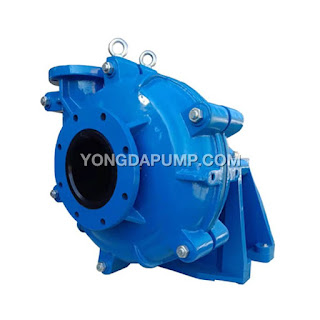Rubber Lined Slurry Pump: A Durable Solution for Abrasive and Corrosive Applications
In various industrial applications such as mining, mineral processing, and power generation, handling abrasive and corrosive slurry can be challenging. Slurry pumps play a crucial role in these industries by transporting slurry from one location to another. However, the harsh nature of the slurry can cause significant wear and tear on the pump's components, reducing its performance and reliability. A solution to this problem is to use a rubber-lined slurry pump.
A rubber-lined slurry pump is a centrifugal pump that has a rubber lining applied to the interior of the casing and impeller. This lining provides a barrier between the abrasive and corrosive slurry and the metal components of the pump. The rubber lining absorbs the impact of the slurry, reducing wear and tear on the metal components, and provides corrosion resistance, increasing the pump's service life.
The rubber lining used in slurry pumps is typically made of natural rubber or synthetic rubber such as neoprene, EPDM, or nitrile. Natural rubber is an excellent choice for highly abrasive applications due to its high tear and cut resistance. Synthetic rubbers are ideal for handling chemicals and oils and have better resistance to heat and ozone.
The rubber lining process involves vulcanization, which creates a strong bond between the rubber and the metal components. The process involves preparing the metal components by cleaning and roughening the surface, applying the rubber lining, and curing the rubber using heat and pressure. The vulcanization process ensures that the rubber lining is tightly adhered to the metal, creating a durable barrier that protects against wear and corrosion.
Rubber-lined slurry pumps are designed to handle highly abrasive and corrosive slurry with solids concentrations ranging from 5% to 70% by weight. These pumps can handle various types of slurry, including sand, gravel, coal, and minerals. The rubber lining provides an excellent seal, preventing leaks and reducing the noise and vibration of the pump.
The benefits of using a rubber-lined slurry pump include increased reliability, reduced maintenance costs, and longer service life. Rubber lining provides protection against wear and tear, reducing the need for frequent repairs and replacements. The reduced maintenance costs result in increased uptime, improved productivity, and lower operating costs.
In addition to the benefits mentioned above, rubber-lined slurry pumps offer the following advantages:
Resistance to Chemicals: Rubber lining provides excellent resistance to a wide range of chemicals, making these pumps ideal for handling corrosive slurry in chemical processing plants.
Reduced Downtime: The durable rubber lining reduces wear and tear, increasing the pump's service life and reducing downtime.
Improved Safety: The rubber lining creates a barrier between the slurry and the metal components, reducing the risk of leakage and improving safety in the workplace.
Customization: Rubber-lined slurry pumps can be customized to meet specific application requirements, including flow rate, head, and material compatibility.
In conclusion, rubber lined slurry pumps are a reliable and durable solution for handling abrasive and corrosive slurry in various industrial applications. The rubber lining provides protection against wear and tear, corrosion, and chemical attack, increasing the pump's service life and reducing maintenance costs. Rubber-lined slurry pumps offer improved safety, reduced downtime, and customization options, making them an ideal choice for harsh industrial environments.

